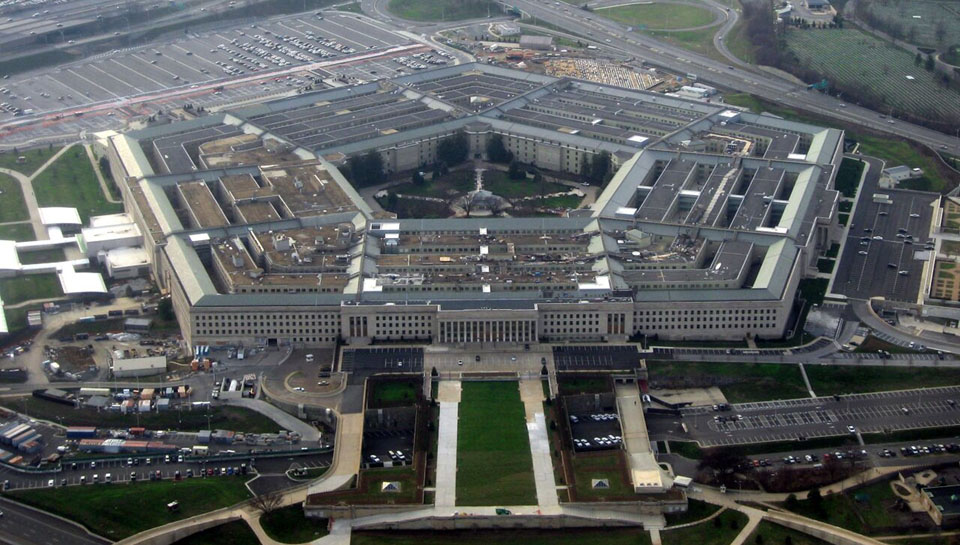A Tough National Defense Strategy
Posted on

The National Defense Strategy, released this morning, may be the single most important document penned by Defense Secretary Jim Mattis. It encapsulates the Trump Administration’s defense policies in one place for the first time and provides guidance for the 2019 defense budget, to be released in a few weeks. That budget will mark the administration’s first chance to shape the defense budget from the beginning and will set the stage for the rest of the Trump Administration. Mark Cancian, who used to build defense budgets at the Office of Management and Budget and now works for the Center for Strategic and International Studies, got a detailed briefing yesterday at the Pentagon about the NDS. (Hint: Check the last paragraph.) He offers our readers this exclusive look inside the strategy. Read on! The Editor.
The long awaited National Defense Strategy (NDS) bluntly describes a US military that is losing its edge over potential competitors, and urges “increased and sustained investment” for “long-term strategic competitions with China and Russia”. It echoes many long-standing themes from the Republican national security establishment, but with a few dashes of classic Mattis perspectives added in. Those interested in specifics may be disappointed because the unclassified version is only a fraction the length of the classified version that went to the Congress, so there is no discussion of trade-offs, numbers or dollars.
Same Threats, Different Order
The NDS identifies five threats: China, Russia, North Korea, Iran, terrorism. These are the same threats that Secretary Carter described at the end of last administration. This is not surprising since Joint Chiefs Chairman Gen. Joe Dunford and the military establishment have carried over, even though all the political officials have changed. What’s interesting is that the order has changed.

Mark Cancian
After 2014, with the Russian takeover of the Crimea and move into the Ukraine, Russia was clearly identified as the top threat. Now it is China, as editor Colin Clark described yesterday. This makes sense from a long-term perspective, as many strategists have pointed out. Russia punches above its weight in military affairs, having a large military establishment left over from the Cold War but a weak economy underneath it. China, on the other hand, has a strong and growing economy that will sustain a powerful and expanding military over time.
To win in this demanding environment, the document repeatedly argues for the need to “field a lethal, resilient, and rapidly adapting joint force.” (“Lethal”, a classic Mattis-ism appears a dozen times in the text.) To do this, it advocates modernization as the highest priority, investing in nuclear forces, space and cyberspace, missile defense and joint lethality.
Expanding force structure is distinctly a lower priority since all the investments cited are for modernization. However, the strategy does note that, “The size of our force matters.” This appears to be a late add by the White House and sounds more like National Security Advisor H.R. McMaster than Mattis.
Also interesting is the identification of three theaters of engagement: the Indo-Pacific, Europe, and the Middle East. This is consistent with what the Obama administration had been doing towards the end, as it was pulled back into Europe by Russian aggression and into the Middle East by ISIS. Although China is clearly the leading threat, there is nothing in the unclassified document about sending a preponderance of combat power to the Pacific. The classified document likely expresses more of a focus on China, but this strategy is clearly backing away from the Obama QDR 2014 notion of withdrawing from Europe and the Middle East in order to focus on the Pacific (“the rebalance”).
The strategy does make some mushy nods to other regions like South America and Africa, but these look like pro forma acknowledgments designed to reassure allies without making major force or policy commitments.
Two Major Conflicts?
A big change is the force sizing construct, the way the strategy calculates how many forces are needed and what kind. The two major conflict construct, which has been a constant in various configurations since the end of the Cold War, is replaced by a “1+” construct: “defeating aggression by a major power…[and] deterring aggression by [another] major power.” Thus, “defeat and deny” in QDR 2014 is now “defeat and deter”, which seems to imply less warfighting capability in a second conflict. This change likely reflects the fact that conflict with a major power like China or Russia would be more demanding than the typical regional conflicts of the past like North Korea or Iran. Although the language in the unclassified document is not clear about who a “major power” is, a senior defense official confirmed that it was China and Russia. The classified version is apparently clearer about the nature and simultaneity of conflicts, describing eight scenarios.
The strategy acknowledges that “during normal day-to-day operations, the Joint Force will sustainably compete in the three key regions”, but these crisis response missions do not appear to be a driver for force sizing; the strategy will “prioritize maintaining the capacity and capabilities for major combat”. To manage these day-to-day operations, the unclassified document has a confusing description of “Dynamic Force Employment” and a “Global Operating Model”, which senior officials say is clearer in the classified version. The intention is to adjust peacetime force deployments to levels that the force can sustain. This is attractive in theory but difficult to do in practice.
There is no discussion of stability operations or counterinsurgency except for one passing mention of “competition spanning the entire spectrum of conflict”. This is a huge change from the Bush years when the 2006 QDR focused mainly on the counterinsurgency campaigns in Iraq and Afghanistan. The challenge here is that the United States may not be able to choose the wars it fights and thus may end up conducting stability operations even if it doesn’t want to. The classified version apparently makes the point that such operations can be conducted by a force designed for high-end combat but with risk. This will likely get pushback from the many experts who argue that stability operations and irregular warfare have their own, unique, demands.
Links And Gaps
Other elements show strong continuity with previous post-Cold War national security strategies. There is a lengthy “hymn to the allies”, extolling their value, the long-standing relationships, and the need for these connections in the future. There is also an extended discussion about the importance of the “resilient, but weakening, Post-WWII international order.”
The strategy calls for “a motivated and highly skilled civilian work force”, which contrasts with customary Republican skepticism about the government workforce. Indeed, much of the personnel rhetoric sounds like Defense Secretary Ash Carter’s “Force of the Future”, with calls for revitalized professional military education, talent management with fellowships and civilian education, and assignments that increase interagency understanding. Missing, not surprisingly, is the customary democratic celebration of diversity.
Missing also is any discussion about sustaining the All Volunteer Force and the supporting establishment underneath the warfighters, which was so prominent in the 2014 QDR. This again likely reflects a Mattis perspective and that of the strategists around him. They focus on warfighting capabilities. Oddly, though, there is no discussion of Guard and reserve forces either. Usually there is at least a nod to the importance of the total force.
No Self-Esteem Building
Gone is the 2014 QDR rhetoric about “the best military in the world”. Instead, the document is blunt that, “the US has no preordained right to victory”. One can see Mattis’s sense of history coming through here.
America Still First
As with the National Security Strategy, there is a strong tone of American exceptionalism (or “America first”): “The Department of Defense will…remain the preeminent military power in the world, ensure the balance of power remains in our favor, and advance an international order that is most conducive to our security and prosperity.” The department will “prevail in conflict and preserve peace through strength.” There is no hint that the United States will accept decline or even a multipolar world.
The NDS lacks the NSS’s extended discussion about trade and economics, though this may reflect the different purposes of the documents: government-wide versus defense specific. The NDS does have one nod in that direction saying that “a dominant Joint Force will preserve access to markets…that will improve our standard of living“.
More To Come…
Tradeoffs, numbers, and dollars are all missing from the document, and that will frustrate a lot of readers. The Congress explicitly directed that the NDS be classified, with an unclassified version, in order to allow a more candid discussion of trade-offs and priorities. The much longer classified version that went to the Congress contains this candid discussion, but the nature of the strategy’s trade-offs—and details of the specific “winners” and “losers”—will be unclear until some of those details begin to leak out.
Numbers and dollars will be contained in the budget documents when they come out in early February. Reportedly, at the end of the administration’s FY 2019 internal budget process, the department received a large increase in expected fiscal 2019 funding and is still working through how it will allocate the money. So we’ll need to wait a few weeks to find out what happens to major programs like the F-35, how many ships the administration plans to buy, and how big the Army will be. Stay tuned.
Subscribe to our newsletter
Promotions, new products and sales. Directly to your inbox.
